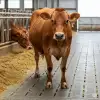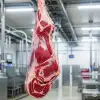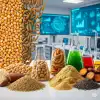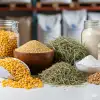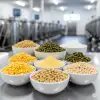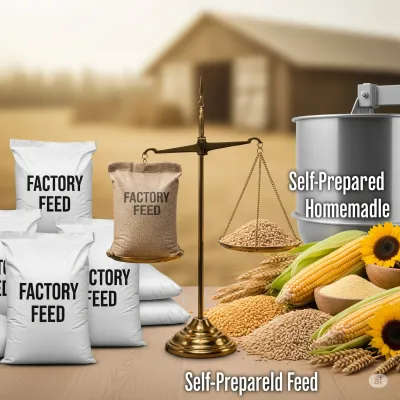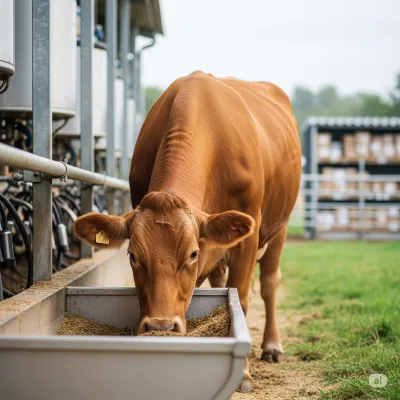Daily Live Weight Gain in Beef Animals: Key to Profitable Fattening
Learn what daily live weight gain (DLWG) is in beef animals, why it's important, and which factors you should consider to maximize this gain. Tips for profitable fattening.
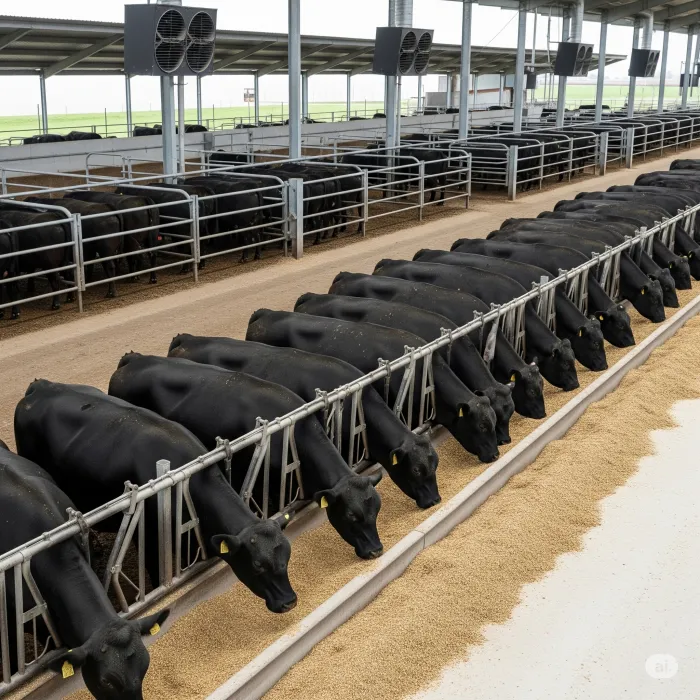
Daily Live Weight Gain in Beef Animals: Key to Profitable Fattening
The primary goal of beef cattle farming is to ensure animals gain weight as quickly and efficiently as possible within a certain period. This is where the concept of **daily live weight gain (DLWG)** comes into play. DLWG is a crucial performance indicator that shows the average kilograms an animal gains per day. High DLWG is vital for both your animals' health and your farm's profitability. In this blog post, we will discuss what DLWG means, why it is so important, and how you can optimize this gain in your beef animals, in simple and understandable language.
What is Daily Live Weight Gain (DLWG) and Why is it Important?
DLWG is the average value obtained by dividing the difference between an animal's starting weight at the beginning of the fattening period and its weight at the end of the fattening period by the number of fattening days. For example, if a calf weighing 200 kg reaches 350 kg after 100 days of fattening, the total weight gain is 150 kg (350-200), and the DLWG is 1.5 kg/day (150 kg / 100 days).
The importance of DLWG can be summarized in several key points:
- Economic Efficiency: High DLWG allows the animal to reach market weight in a shorter time. This reduces feed costs, shortens the time spent in the barn, and thus increases farm profitability. It means producing more meat from the same amount of feed.
- Feed Conversion Ratio (FCR): High DLWG is usually associated with a better feed conversion ratio (FCR). This means the animal converts the feed it eats into meat more efficiently.
- Health Indicator: Healthy and well-fed animals gain weight better. Low DLWG can be a sign of problems such as nutritional deficiencies, illness, or stress.
- Market Competitiveness: Animals that reach slaughter maturity in a shorter time allow you to adapt more quickly to market conditions.
Factors Affecting DLWG
Daily live weight gain is influenced by many factors. Understanding these factors is critical to optimizing fattening performance.
1. Genetic Potential (Breed):
The animal's breed determines its genetic growth potential. Some breeds (e.g., beef or dual-purpose breeds like Holstein, Charolais, Limousin) are genetically predisposed to gain weight faster. Native breeds generally have a slower growth rate.
2. Age and Starting Weight:
Generally, young animals utilize feed more efficiently and can gain more weight per unit of feed than older animals. Additionally, live weight at the beginning of fattening is important; very thin or very fat animals may have reduced fattening performance.
3. Nutrition (Ration Balance and Quality):
This is the most influential factor on DLWG and the most important one that the farmer can control. For high DLWG, the ration must be balanced in terms of:
- Sufficient Energy: Key for growth and meat formation. Usually provided by grains (corn, barley).
- Sufficient Protein: Indispensable for muscle development. Provided by feeds like soybean meal, sunflower meal.
- Appropriate Roughage: Necessary for digestive health and feed utilization. Such as straw, hay, silage.
- Vitamins and Minerals: Critical for growth, bone development, and overall health. Must be supplemented with premixes.
4. Health Status:
Diseases, parasites, or digestive system problems negatively affect DLWG by reducing the animal's ability to utilize the feed it eats. A healthy herd is fundamental for high DLWG.
5. Environmental Conditions and Management:
- Housing Conditions: A clean, dry, well-ventilated, and stress-free shelter increases animal comfort, supporting feed intake and weight gain.
- Water Supply: Free access to clean and fresh water is vital for feed intake and digestion. Water restriction rapidly reduces feed intake and DLWG.
- Stress Factors: Factors such as overcrowding, sudden feed changes, heat stress, and noise can cause animals to stress and lead to a decrease in DLWG.
- Feeding Frequency and Schedule: Providing feeds at regular times and with sufficient frequency maintains feed intake and the balance of the digestive system.
Practical Applications to Increase DLWG
Here are some practical methods you can apply to increase DLWG in your beef animals:
- Balanced Ration Preparation: Create rations with balanced energy and protein content suitable for your animals' age, weight, and fattening goals. Seeking help from an animal nutrition specialist is best.
- Quality Feed Raw Materials: Ensure that the feeds you use are of high quality, fresh, and mold-free. High-quality forages (corn silage, quality hay) support digestive health.
- Constant Water Access: Animals should have free access to clean and fresh water 24 hours a day. Water troughs should be cleaned regularly.
- Health Management: Follow vaccination programs, regularly control parasites, and promptly diagnose and treat sick animals.
- Comfortable Housing: Protect your animals from extreme heat or cold. Ensure that shelters are well-ventilated and floors are dry. Maintain sufficient space per animal.
- Slow Transitions: Make changes to the ration or environment (e.g., adding new group of animals) gradually.
- Feed Additives: With the recommendation of a veterinarian or nutrition specialist, you may consider using probiotics, yeast cultures, or specific mineral/vitamin supplements that improve feed utilization.
- Regular Weighing: Monitor your animals' DLWG by weighing them at regular intervals (e.g., once a month). This helps you determine changes you need to make in the ration or management.
Conclusion
Daily live weight gain is the key indicator of success in beef cattle farming. Genetic potential, balanced nutrition, good health management, and comfortable environmental conditions should be considered as a whole to achieve high DLWG. By paying attention to these factors, you can both ensure the health and welfare of your animals and significantly increase the profitability of your farm. Remember, beef farming is an art, and attention to detail always pays off!
